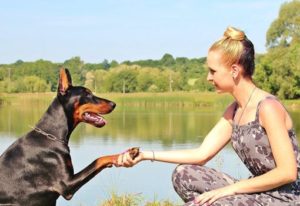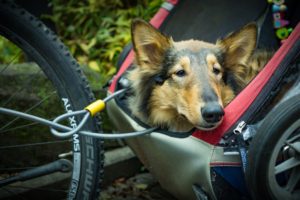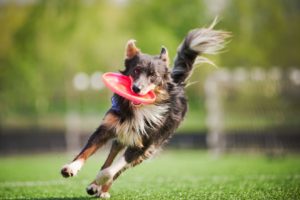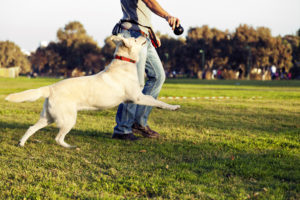Let’s face it. You love dogs! You feel like you really connect with the canine world and understand doggie behavior. As a result, you want to become a professional dog trainer and you are comfortable with the idea of devoting your time and energy to the well being of these amazing creatures.
Unfortunately, you cannot track down any kind of mandatory state or federal certifications that will allow you to make it official and share your expertise with the dog owning public. You ask yourself, what does a person need to do to become a dog trainer? Continue reading and we will help show you how you, too, can become a dog trainer.
Educate Yourself
Since there currently are no state or federal requirements in place for what is needed to be a professional dog trainer, one of the most important things you can do is learn as much as possible about dogs and dog behaviors. This means reading books, watching videos and spending as much time as you can around dogs.
Two good places to start are your local library and the internet. At your local library, you should be able to find books on the topic of dog training and the various methods that experienced dog trainers use in their field. The internet is also a valuable tool to utilize, with videos and articles about all things dog training.
There are also dog training certification programs available that you can participate in for hands on instruction. However, the first step to becoming a dog trainer is to get a dog that you can train.
Sign Up For an Obedience Class with Your Dog
An excellent way to see what is involved in a typical dog training session is to take part in one. If you have a dog, you also have the perfect opportunity to get out there and get your feet wet.
There are many ways to get into a class. Various pet supply stores offer in-house training at their locations that puppy parents and their dogs can take part in. Maybe you may want to go the route of doing an in-home private session with a trainer. Perhaps you may want to try both ways?
If you are in a class with other dogs and parents, you will get to see how the training is carried out in a group. Being in a group also exposes you to different people and dog breeds, both of which are valuable experiences. In a private session you have the dog trainer at your disposal and will have lots of opportunities to ask questions and pick their brain, so to speak, about the world of dog training and how to get started.
Breed Exposure
Try and expose yourself to as many breeds of dog, and dogs in general, as possible. Visit with friends who have different kinds of dogs or volunteer at animal shelters, which always have a myriad of dogs.
You may also choose to spend time volunteering or working with a rescue that is breed specific. Fortunately, most of these organizations can always use the help. The Internet can assist you in tracking down these organizations and point you in the right direction.
Apprenticeship and Practice
After you feel comfortable in the fun and challenging world of dog training, see if you can find a dog trainer to take you under their wing (or paw) so that you can learn the ins and outs of the business.
An apprenticeship will allow you to see how somebody makes a living as a trainer. Working with somebody in the business will also be helpful when it comes time to create a resume or portfolio of your work and experience. Another great way to hone your skills is to volunteer at animal shelters and offer to train and work with the dogs there.
Helpful Hints for a Future Dog Trainer
- Set realistic expectations. It could take months or years to hone your craft.
- A good dog trainer is always learning new things and seeking out information.
- Keep detailed notes of your experiences & knowledge development.
- Training is about working with dogs & their people – expect to encounter all kinds of personalities.
Working with dogs and their families can be a very rewarding and uplifting experience. For NuVet, keeping dogs healthy is rewarding, which is why we created NuVet Plus.
NuVet Plus is a nutritious vitamin supplement for dogs and cats. We regularly receive testimonials from happy NuVet families about how NuVet Plus has helped improve the health of their pets. Learn more about how NuVet Plus can help improve the health of your pet.





